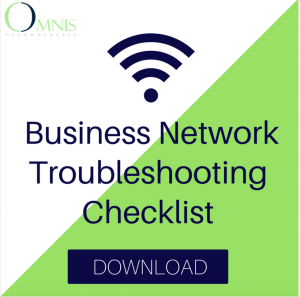
The US government struggles with tech issues that may sound very familiar:
- Boosting security of IT systems to reduce hacking and fraud
- Systems using components that are at least 50 years old
- Moving from physical storage to cloud-based systems
Many businesses are struggling with these same issues. The difference is it’s a lot easier (and cheaper) for businesses to shore up security and do an IT infrastructure upgrade.
Here are some things business owners can learn from the US government.
Thinking about an IT infrastructure upgrade? Here’s what you can learn from the US gov
From 2003 to 2012, only 6.4% of federal IT projects costing more than $10M were successful. Here are the biggest obstacles to success:
- Project mismanagement
- Project size
- Dinosaur systems
- Multiple stakeholders
- Lack of business incentives
To avoid these issues in your own infrastructure upgrade, make sure you follow these five tips.
1. Make sure your IT project management team answers to ONE decision maker
Most IT teams are experienced in infrastructure upgrades. They’ve completed similar projects before, and will make it happen on time and in budget. But they can’t do that if people on your end are giving conflicting feedback.
The government saw issues from the number of stakeholders who had influence over the project. Too many fingers in the pie drives up costs and stalls even the easiest projects.
2. Break the project into smaller, more easily achieved projects
This makes it easier for your team AND yourself to track and report on progress. You can monitor successes, keep track of failures, and implement future changes more easily. It will also make it easier to transfer project management if necessary.
As the government has shown us, big projects are easy to miscalculate in both time and money.
3. Make risks the responsibility of your IT team, not your business
Make sure their contract has clauses for an unfinished or failed project. You shouldn’t have to suffer for shoddy work, and they should be fully invested in making the project a success.
A big issue with the government’s approach involved its contracting agreement. Basically, the IT vendors did work, and the gov paid them. That made it easy for vendors to keep pushing the project back and take more and more money.
4. Regular reporting on progress, successes, and failures
Your team should consistently report on finished items, tasks in progress, and next steps.
Because there are so many different conversations happening and teams involved in the government’s IT projects, things slipped through the cracks. That makes it difficult to continuously upgrade to keep up with security advances.
If you follow along and understand what’s happening (at least a little bit), you’ll be more confident in your new infrastructure and your team.
5. Take advantage of modern technology
Part of upgrading your infrastructure is implementing new physical components. While a lot of IT operations happen in the Cloud these days, there’s still a lot of necessary hardware to maintain down on Earth.
The US gov is notorious for trying to run modern operations on dinosaur equipment. Don’t make that same mistake.
Make sure your systems are efficiently grouped together, everyone’s using the same hardware, and everything is up-to-date to maximize security and minimize costs.
“The US should have the most modern government in the world. Today it doesn’t,” Apple Chief Executive Officer Tim Cook said. We agree, Mr. Cook. Except this should apply to our businesses as well – business is the backbone of America, after all.
